- Home
- H. R. F. Keating
Agatha Christie Page 3
Agatha Christie Read online
Page 3
Most Christie plots are based upon a single and fairly simple circumstance, which is then elaborated and concealed. In Styles the plot springs from the fact that in England somebody acquitted of a crime may not be tried for it again. Suppose, then, that a stumbling block against your committing a murder is the fact that you are an obvious suspect, you might – if you have that particular kind of tortuously ingenious mind – take advantage of this very situation by laying a trail of clues leading to yourself, which would cause your arrest. Once arrested and tried you produce an alibi, and acquittal follows. This murder plan may seem unlikely, but it was carried through successfully in real life a decade after the publication of Styles by a murderer who confessed when there was little evidence against him, withdrew his confession at his trial, was acquitted for lack of other evidence, and then boasted of his crime. The Christie villain is foiled by Poirot, who sees what he is trying to do, manages to prevent his arrest, and even uncovers his alibi so that he is apparently cleared of suspicion. Poirot’s manoeuvring also deceives the reader, who sees the detective proving a suspect’s innocence, and so crosses him off the list of those who may have committed the crime.
There are other felicities in Styles, in particular several of those deductions that trick us by their very simplicity. The two significant facts, Poirot tells his Watsonic collaborator Captain Hastings, are that the thermometer registered eighty degrees in the shade on the day of the murder, and that the chief suspect wears odd clothes, has a black beard and uses glasses. We may say with Hastings: ‘Poirot, I cannot believe you are serious,’ but the points are clear enough. (1) The murdered woman ordered a fire to be lighted in her room on this hot summer day: hence, she meant to burn something. (2) The suspect has been identified by the local chemist as a man who bought poison, but his peculiarities of appearance make him very easy to impersonate.
Styles was a splendid beginning. Not all of the books that succeeded it were on the same level, and the semi-thrillers that used what has been called a ‘master criminal’ theme seem to me inferior in almost every way to the orthodox detective stories. But as Agatha Christie’s skills developed, a pattern emerged which might be called the typical Christie plot form. It was used by other people too, but by none so well or so variously as in her books. The form consisted of gathering a number of people together in a particular place preliminary to one of them being murdered, and of showing the reasons for their presence. It is a way of creating a totally closed society, and one can see it happening in very different books: Death in the Clouds (1935) (Death in the Air in America), Cards on the Table (1936), Death on the Nile (1937), and And Then There Were None (1939). To look at the way in which these plots are devised and carried through is to see the high skill that was, with almost deceptive casualness, employed in them.
Death in the Clouds gives us eleven passengers but only ten suspects, since the eleventh airplane passenger is Poirot. There they are, en route from Le Bourget to Croydon (in relation to air travel the book has a strong period flavour), and we get glimpses of their actions and thoughts. Among these glimpses are the thoughts, deceptively conveyed of course, of the murderer. The victim is Madame Giselle, she has a mark on her neck, and a wasp has been flying about in the cabin. Was the wasp responsible? But below one passenger’s seat is a thorn of the kind used by South American tribes for puffing from blowpipes. The thorn is tipped with curare, and a blowpipe is found under the seat of… Poirot.
There are two highly characteristic things about this outline of suspects and setting of a scene. The first is that it confines the suspects to the people on board the airplane and then, by a process of elimination, to those who got up and passed Madame Giselle’s seat or had the chance to use a blowpipe; the second, that a trick is being used in the apparently simple outline. At an early point Poirot says that a detailed list of the passengers’ belongings will help to solve the crime. We are given this list, which covers three pages, and yes, if we interpret it correctly we shall come up with the right answer. But the interpretation is not easy to make.
In Cards on the Table the situation is more deliberately artificial. The rich Mr Shaitana ‘collects’ undiscovered murderers on the ground that ‘murder can be art! A murderer can be an artist.’ These are, he says ‘the ones who have got away with it, the criminals who lead an agreeable life which no breath of suspicion has ever touched’. Shaitana stages a dinner party to which he invites four detectives familiar to Christie readers – Superintendent Battle, Colonel Race, Mrs Ariadne Oliver and Poirot himself – and four murderers, or four people said by him to have committed murder. Some rubbers of bridge are played, and the evening ends with Shaitana’s death. The closed circle is perfect. Veteran Christie readers know that the detectives are beyond suspicion. Which of the four bridge players is the killer? The bridge scores are reproduced at the beginning, and by studying them – and the text – it is possible to come up with the right answer.
Death on the Nile, Agatha Christie’s own favourite among her books with a foreign setting, is a more subtle and sophisticated affair. In the first twenty-five pages we meet all the principal characters and discover their reasons, that is the reasons they give to each other, for going to Egypt. The murderer is among these characters, and again a careful reader of these opening pages may deduce correctly what is likely to follow. The deception here is one of the most brilliant pieces of Christie conjuring, because at a fairly early stage the intelligent reader may think he sees what is going to happen, only to be confounded when the crime is committed by the fact that what he suspected seems to be impossible. I should be inclined to put this with the very best Christie plots if she had not been so desperately intent to deceive as to strain credulity at times. Her party of travellers down the Nile includes a kleptomaniac, an alcoholic, a thief and a subsidiary would-be murderer whose activities have nothing to do with the main plot. All this is too much, and indeed is far more than was needed to achieve her ends. The true deceptions, those connected with the main plot, are puzzling enough, in particular one that concerns a pistol wrapped up in a cheap handkerchief and a velvet stole and thrown overboard. Why was this done, Poirot asks again and again, saying rightly that it is the crux of the case. In spite of the red herrings, for which she had perhaps rather too strong a liking, Agatha Christie’s sense of fair play is always paramount in relation to a significant clue. She shows it to us, teases us with it, almost openly tells us the truth about it through Poirot – and still we are deceived because of her meticulous way with words, which when she is dealing with a clue in a story are to be taken precisely at their literal meaning. In Death on the Nile we see a pistol being fired, and we see the result as a crimson stain spreads over a wounded man’s trouser leg, but… but close reading of the passage is advisable.
I shall have something to say about the plotting of And Then There Were None later on. Here it is enough to point out the skill with which, in the first section, the pattern is developed as the suspects who are also the victims are seen deciding to accept invitations to the island off the Devon coast where after dinner on the first evening all ten of them hear a recording which says that they were guilty of murder and asks: ‘Prisoners at the bar, have you anything to say in your defence?’ Again a trick, the first in a whole series, is being played on us. We are allowed to see some of the thoughts of the person who has devised this death trap without having much chance of placing a name to him or her. Except, of course, by a knowledge of Agatha Christie’s methods, of the kind of trap she sets.
2
The kind of trap she sets – there are people who claim to be able always to tell the villain in any Christie story by such an awareness. I couldn’t make this claim myself, and indeed I doubt whether it is possible to be specific about the ‘kind of trap’. Even the pattern I have called the typical Christie plot form does not apply to the majority of her books, although it is used in a high percentage of the best ones. But her work is astonishingly varied. There is a whole slew of books
that take their settings from the fact that her second husband Sir Max Mallowan is an archaeologist, concerned chiefly with Assyrian culture, and that she often accompanied him and to some extent shared his interests. But although archaeology has a place in several stories her readers are never oppressed by a feeling of ignorance. She had an instinctive awareness of just how far her audience would wish her to go in showing expert knowledge, and no Agatha Christie mystery depends for its solution on a knowledge of ancient artefacts. Even in Death Comes as the End (1945), a not very successful experiment set in ancient Egypt, no specialized knowledge is needed to solve the puzzle.
There are several other sets of books which don’t fit into any particular pattern of plotting. These include the five Tommy and Tuppence thrillers, books such as The Mysterious Mr Quin, in which Agatha Christie indulged her interest in the supernatural, and the collections of Poirot and Miss Marple short stories. All of these seem to me not only inferior to her best work, but also as remote from the main stream of it as are the romantic novels she wrote under the name of Mary Westmacott. The main stream of her writing is unquestionably in the thirty-odd Poirot novels and the much smaller number, eleven at my last count, concerned with Miss Marple.
One sees certain things more clearly in looking back at her work than was apparent when reading the books as they were published. One is the supremacy of the best Poirot stories over the rest of what she wrote. She became tired of Poirot herself and preferred Miss Marple, who did not appear in a novel until 1930, with the feeble Murder at the Vicarage. Miss Marple, she said, was more fun, and like many aunts and grandmothers was ‘a splendid natural detective when it comes to observing human nature’. Only a minority of readers agreed with her. If one prefers Poirot it is not only because he is an altogether livelier character, but also because his insights are more rational and less inspirational than Miss Marple’s. A second thing that becomes apparent is her frequent carelessness in leaving deplorably loose ends, and a third is the highly verbal nature of her plotting. It is not just that you don’t need to know about ancient artefacts to solve a Christie puzzle, but that you need no specialized knowledge at all. Think of John Dickson Carr’s locked-room mysteries, of R. Austin Freeman’s (and many another writer’s) scientific lore, of the learning paraded by Dorothy L. Sayers, of all those crime stories that depend for their solution upon our technical knowledge of the theatre, or of bibliography, or on changes of temperature, or timetables, or tide tables, and the Christie simplicity will seem most welcome. Yet simplicity is not quite the word. The basic difference in plotting between her and most detective story writers is that the central clue in almost all of her best books is either verbal or visual. We are induced to give a meaning to something that has been said, or something that has been seen, which is not the true meaning or not the only possible meaning. A typical instance of the verbal illusion occurs in a story where we are led to believe that a child named Evelyn, born to a woman involved in a murder case, is a girl. But Evelyn may be a boy’s name too. Why do we never think of that as a possibility? Because early in the story the mother gives a newspaper interview in the course of which she says: ‘My daughter shall grow up happy and innocent. Her life shall not be tainted by the cruel past.’ But we are told clearly enough in relation to the interview that the woman who gives it is expecting a child, so that she could not possibly have known its sex. The assumption has been planted in our minds, and when the woman’s child Evelyn is mentioned, we take the feminine sex for granted. The assumption is unjustified. Evelyn is a man.
Visual deceptions are of the kind suggested already in relation to Death on the Nile. Sometimes it is hardly possible for us to penetrate them, but many have the marvellous conjurer’s quality (They Do It With Mirrors – Murder With Mirrors in America – is of this kind) that leave one gasping with pleasure at the audacity of the deceiver, saying: ‘So that’s how it was done.’ Such visual and verbal clues, when they are used with subtlety and fairness, seem to me the very best things in the classical detective story. At her best Dame Agatha Christie was an incomparable deceiver.
That the level of her work varied greatly has to be acknowledged. Most of her finest performances belong to the 1920s and 1930s. The following decade more or less maintained this high level, but after that the decline was steady and near the end it was steep. The books of her last few years were, with only one or two exceptions, no more than faint echoes of her best work. A book like The Clocks (1963) opens very promisingly with a body found in a room full of clocks, most of which have no right to be there. The explanation of this anomaly, which would have been the heart of an earlier novel, is both casual and disappointing. And the people have become shadowy too, as inevitably she lost touch with contemporary life and feeling.
A survey of her whole output shows that she was often slapdash from the beginning in dealing with the technical details from which she flinched. Murder on the Links (1923), for instance, has been justly praised for its complicated and brilliant plotting, and for the way in which details of a twenty-year-old murder are interwoven with a current one. It contains one of her most characteristically clever touches of deception, and what must be called an almost equally characteristic carelessness in handling an important plot detail. The touch of deception first. The question arises as to how some intruders left a house. Perhaps, Poirot suggests, they might have climbed on to a tree and jumped down to a flower-bed, but it is pointed out to him that the mould is perfectly smooth. A companion flower-bed, he says, shows marks of the gardener’s hob-nailed boots, but the official investigator replies scornfully that on this side ‘we have no tree, and consequently no means of gaining access to the upper storey’. When Poirot insists that the gardener’s footprints are important he is thought ridiculous. What is their importance? Just that the gardener has weeded both beds, and so must have left his footprints on both. The fact that the second bed is smooth means that the intruders did escape that way, and that they had time to smooth the mould after them.
And now the piece of carelessness. At an early stage of the case Poirot picks up a piece of lead piping on the scene of a crime, and much later says that it has been used ‘to disfigure the victim’s face so that it would be unrecognizable’. But Hastings has already looked at the victim, and neither he nor the police investigator mentions the savage blows that would have been necessary to make the face unrecognizable. Hastings says that it was ‘terribly convulsed’, which is quite a different matter.
3
In the end Agatha Christie’s claim to supremacy among the classical detective story writers of her time rests on her originality in constructing puzzles. This was her supreme skill, and it is examined here in three books, The Murder of Roger Ackroyd, The A.B.C. Murders and And Then There Were None. Some would add to these, which I regard as her most dazzling performances, Murder on the Orient Express (1934) (in the US Murder in the Calais Coach) or Peril at End House (1932) or even the last Poirot story Curtain (1975). But the crime writer who relies on a puzzle is like a tight-rope walker. A perfect achievement is a perfect marvel, but anything less, any slight swaying on the line, leaves us sharply critical. Both Murder on the Orient Express and Curtain are for me too obviously and purely tricks, and although I rate Peril at End House much more highly than do most critics, it cannot quite be ranked with Christie’s best.
The Murder of Roger Ackroyd was published in 1926, and probably remains its author’s most famous single work. She was inclined herself to say that too much fuss had been made about it, but that was at least in part the reaction of any writer who feels that praise of an early book implies denigration of later ones. But in Roger Ackroyd Agatha Christie did something absolutely new in the detective story. It was a plot device, and what can be absolutely new in that, a sceptical reader might ask? The same reader might go on to point out that she had already used a modified form of this device in a neglected, very engaging story called The Man in the Brown Suit (1924), although there it played only a minor par
t in the story. Perfectly true: but in Roger Ackroyd the device is at the heart of the book, which really could not exist without it. The whole thing is the blandest, most brilliant of deceptions. When we look back to see how it was done – well, as so often with Dame Agatha it is a matter of some assumptions that we are led to make because making them is customary, plus a few carefully chosen phrases intended to deceive without ever being positively untrue.
The trouble with plot devices is that they often obtrude, so that we have all plot and no story. Part of Roger Ackroyd’s triumphant success rests in the fact that the rest of the story is so perfectly typical of the period. A country squire is murdered, the body is found in the library, there is a butler and a housekeeper both of whom behave suspiciously, the cast of characters includes several with a motive for murder. All this, even in the middle Twenties, was far from new. The novelty rests in the fact that the murderer seems to fit so naturally into such a milieu, and yet truly does not belong to it at all. The plot device fits into the framework of the story as snugly as the pearl in its oyster.
One might feel that ingenuity in plot construction could hardly be taken further than Roger Ackroyd. Rather more than a decade after its publication, Dorothy L. Sayers suggested that the detective story as a pure puzzle was in gentle and painless decline, partly because those devices that had seemed so ingenious in the form’s early days – the poisoned toothbrush, the evaporating ice dart, the pistol timed to fire when the grandfather clock in the library struck twelve – were worn out from too much use, and partly because readers’ tastes had changed, so that they were increasingly asking for crime stories in which the characters were as important as the plot. She has proved a truthful prophet, although some of the crime story’s developments would have surprised and displeased her. Agatha Christie’s ingenuity, however, had always been verbal and visual rather than mechanical and scientific, and she responded to the idea that the detective puzzle was worn out by inventing new and still more dazzling conjuring tricks.

 Go West, Inspector Ghote
Go West, Inspector Ghote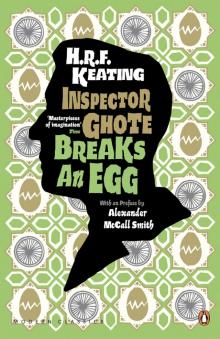 Inspector Ghote Breaks an Egg
Inspector Ghote Breaks an Egg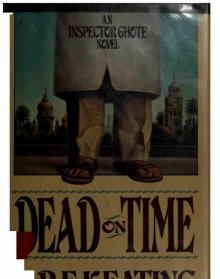 Dead on Time
Dead on Time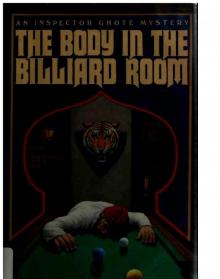 The Body in the Billiard Room
The Body in the Billiard Room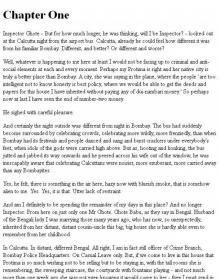 Bribery, Corruption Also
Bribery, Corruption Also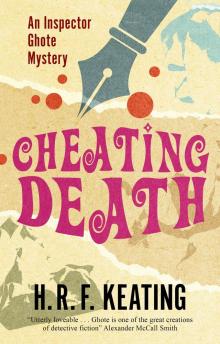 Cheating Death
Cheating Death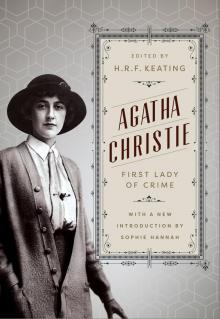 Agatha Christie
Agatha Christie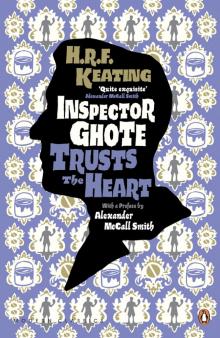 Inspector Ghote Trusts the Heart
Inspector Ghote Trusts the Heart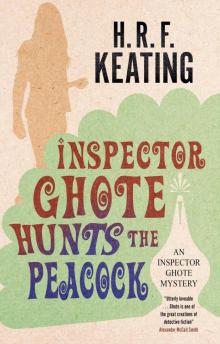 Inspector Ghote Hunts the Peacock
Inspector Ghote Hunts the Peacock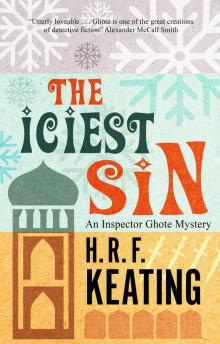 The Iciest Sin
The Iciest Sin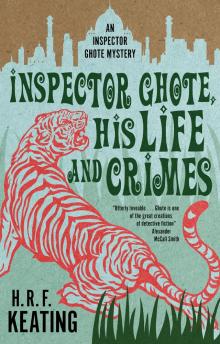 Inspector Ghote, His Life and Crimes
Inspector Ghote, His Life and Crimes Strong Man
Strong Man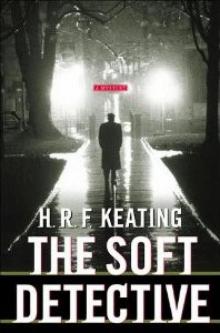 The Soft Detective
The Soft Detective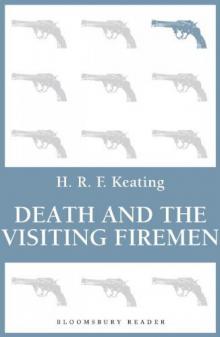 Death and the Visiting Firemen
Death and the Visiting Firemen Breaking and Entering
Breaking and Entering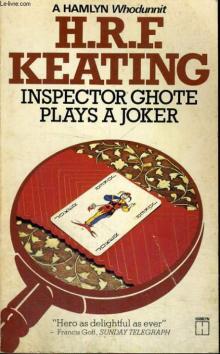 Inspector Ghote Plays a Joker
Inspector Ghote Plays a Joker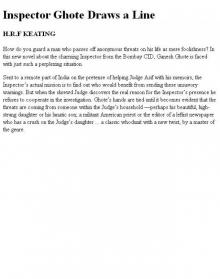 Inspector Ghote Draws a Line
Inspector Ghote Draws a Line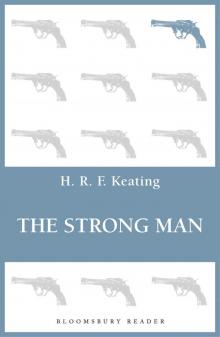 The Strong Man
The Strong Man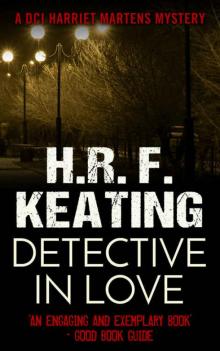 A Detective in Love (A Harriet Martens Thriller Book 2)
A Detective in Love (A Harriet Martens Thriller Book 2) The Perfect Murder: the First Inspector Ghote Mystery
The Perfect Murder: the First Inspector Ghote Mystery Inspector Ghote's Good Crusade
Inspector Ghote's Good Crusade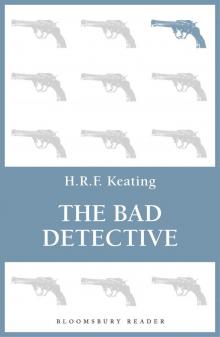 The Bad Detective
The Bad Detective The Dreaming Detective
The Dreaming Detective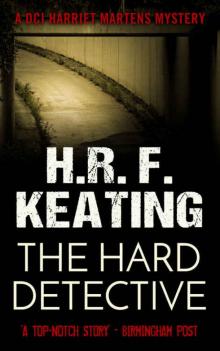 The Hard Detective (A Harriet Martens Thriller Book 1)
The Hard Detective (A Harriet Martens Thriller Book 1)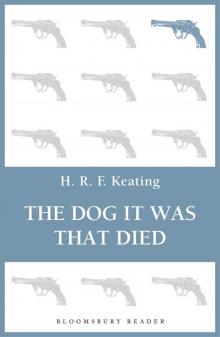 The Dog It Was That Died
The Dog It Was That Died Murder Must Appetize
Murder Must Appetize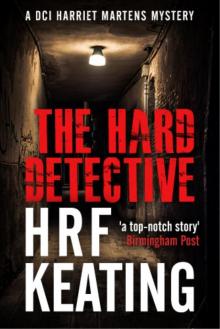 The Hard Detective
The Hard Detective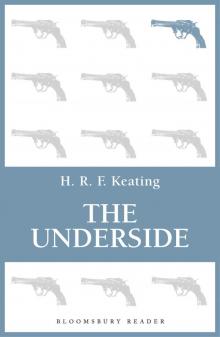 The Underside
The Underside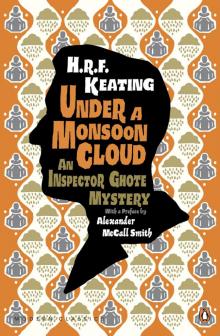 Under a Monsoon Cloud: an Inspector Ghote Mystery
Under a Monsoon Cloud: an Inspector Ghote Mystery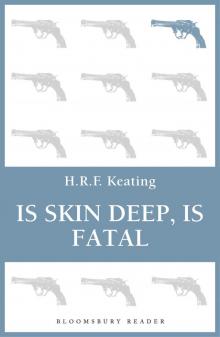 Is Skin Deep, Is Fatal
Is Skin Deep, Is Fatal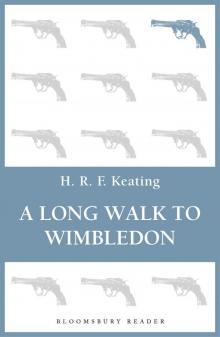 A Long Walk to Wimbledon
A Long Walk to Wimbledon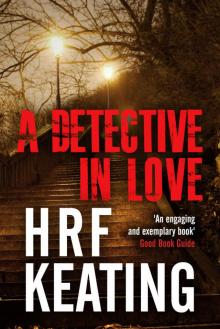 A Detective in Love
A Detective in Love A Detective at Death's Door
A Detective at Death's Door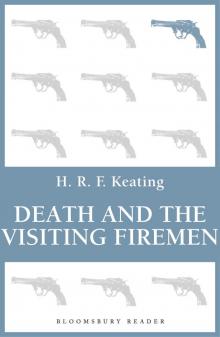 Death and the Visiting Fireman
Death and the Visiting Fireman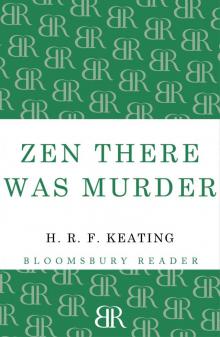 Zen there was Murder
Zen there was Murder